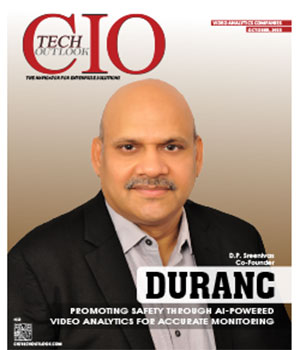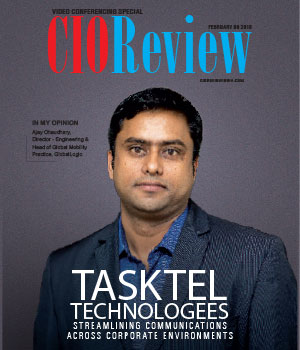
The Future of AV Technology #ChoosingWisely
Ashish Desai, Assistant Director of Multimedia Technologies, Villanova University | Wednesday, 07 February 2018, 10:29 IST
 Broadly, one could argue that the trends in audio visual technology are easy to identify. Why? Because they focus on making the picture look better, audio sound better, media easier to access and consume. Remembering Flip Video, 3D TV, the Creative Nomad, etc., we realize that these flashpoints, though relevant at the time, were transient. And those of us who acted on these flashpoints, might have had unhappy stakeholders and poor ROI. Currently, trends like video conferencing, remote collaboration, 4k, augmented reality, virtual reality, streaming media, and "bring your own" dominate many forecasts. In and of themselves they might only be blips in the evolution of technology, yet I believe they are symbolic of larger trends in a/v technology. For decision makers, it is the relationship between these flashpoints and larger trends that provide truly actionable information for research, analysis and action.
Broadly, one could argue that the trends in audio visual technology are easy to identify. Why? Because they focus on making the picture look better, audio sound better, media easier to access and consume. Remembering Flip Video, 3D TV, the Creative Nomad, etc., we realize that these flashpoints, though relevant at the time, were transient. And those of us who acted on these flashpoints, might have had unhappy stakeholders and poor ROI. Currently, trends like video conferencing, remote collaboration, 4k, augmented reality, virtual reality, streaming media, and "bring your own" dominate many forecasts. In and of themselves they might only be blips in the evolution of technology, yet I believe they are symbolic of larger trends in a/v technology. For decision makers, it is the relationship between these flashpoints and larger trends that provide truly actionable information for research, analysis and action.
Once in a While to All the Time
The role and use of audio visual technologies has gone from specialized use cases to ubiquitous presence. With the near tsunami like amounts of media and information enveloping us on a daily basis, gaining perspective can be difficult. Remember that just short of one decade ago the world was just introduced to the first generation iPhone, virtual worlds like Second Life, HD-DVD and Blu-ray were still competing and YouTube was barely 2 years old. Though popular at the time many people argued these technologies were niche. Take smartphones for example, in 2017, though they were once limited to business travelers and executives, they are now the de facto choice for most people and serve as the hub for large parts of their media consumption. From commerce, entertainment to education, the role and influence of a/v technology is no longer limited. In our digital world, cellphone companies compete on offering "unlimited" plans to satisfy customer appetite for audio and video streaming. In the physical world, the design of our computing devices, classrooms, meeting rooms and huddle spaces must accommodate expectations of video conferencing integration, HD quality cameras, high quality microphones and multiple displays to wirelessly share content. Whether we realize it or not, the role of audio visual technology has become essential in how people play, work and learn. What does this mean for decision making at all levels? Because of how embedded it has become, Audio/Visual technologies need to be a part of the conversation during budget, yearly, and strategic planning. All of the techniques used in project management, task and process optimization should be a part of the a/v technology management and staff development. Exclusion and delays of A/V discussions will amplify risks and increase costs of what has become central to how the world uses technology.
(Video) as The Dominate Medium
Where do people go to consume and exchange information?
Digital screens and audio visual content draw and hold attention the way print media used to do. Traditional news portals now include videos with text overlays and infographics that provide the core facts and analysis of the written article because the video has more impact. User-generated content is dominated by multimedia like podcasts, Snapchat, Instagram, Twitch and YouTube. Through anecdotal and empirical observation, we know digital screens capture the lion share of our attention. Currently our focus is on traditional displays and mobile screens. Looking to the future, both technology and user demand pushes us towards an immersive experience with little distinction between the physical and digital world. People want to interact and consume information wherever they are and whatever they are doing. Digital screens and displays will be embedded into the physical world. Though Google Glasses failed, they served as an iteration for augmented and virtual reality of bringing content and information to the eye while superimposed on the physical world. Whatever business you are in, product you make, whatever service you provide, your customers are looking for an engrossing and immersive visual experience. Have you noticed the number of TV shows and sports broadcasts "offering" a multiscreen experience? Once "a" rare occurrence, it is now the norm.
Success = Open, Integrated, User-centric
In a few different ways, the Information and Mobile Revolutions have brought the removal of barriers and silos in communication. Commoditization has enabled participation by billions of people. To accommodate the massive worldwide scale, businesses are streamlining services and making software easier to use. Users expect it to be simple and easy, whenever and wherever they interact with technology. The immense pressure has resulted in “easy, open and integrated” becoming a design principle for successful firms. Though there are exceptions, most social media apps, productivity suites and entertainment content are available on essentially every major platform. In the enterprise, OS agnostic media sharing software like Crestron's AirMedia, Mersive's Solstice, Intel's WiDi, among others, dominate market share. Whatever A/V investments you are making, you need to have a thorough understanding of not only how it integrates but also the quality of that integration with your other technology systems/services. Ignore this basic need and face the wrath of unhappy users who do not use solutions for which you have paid. They have and will venture off on their own to find a product or vendor to use.
Qualitative to the Quantitative
There was a time that showcase A/V hardware served its purpose as a halo technology. It provided the wow factor and addressed niche use cases. However, in an environment of resource limitations, accelerating introduction of the next big technology, decisions about audio visual technology, have moved past "the cool factor" to how often is it being used, who is using it and is it solving business problems? To address a foundational element of how we interact, A/V stakeholders must seek, plan and incorporate ways to quantify their services and effectiveness. Media portals, Enterprise Video Platforms, and A/V control suites like YouTube, Vimeo, Panopto, Mediasite and Crestron offer deep understanding of usage, impact and effectiveness. Data is essential.
Parting Thoughts
Driven by preferences for low cost and easy to use multimedia technologies that mold to their needs, users act fast and are vocal. You must be agile and adaptive. Both on the micro or macro levels, A/V technology impacts the foundational elements of our environment. Listen to your users, understand how A/V technologies intersect with your core business and invest in your workers and you will see where you need to go and you have the people you need to get you there.
CIO Viewpoint
Drones Are Coming To Your Business
By Tom Basiliere, CIO, Provant Health
Monetization of The Internet Of Things -...
By Mithun Banerjee, Director IT, Schneider Electric
Baseline IT Transformation in Digital Era
By Shibin Chulliparambil, Head of IT, Mafatlal Industries
CXO Insights
Enhancing Productivity and Collaboration for a...
By CIOReviewIndia Team
Conferencing Solutions Modernizing the Workplace
By By Vipin Pungalia, Director, Professional Segment, Sennheiser India
Why Security Is More Pivotal Than Ever In The...



.jpg)



